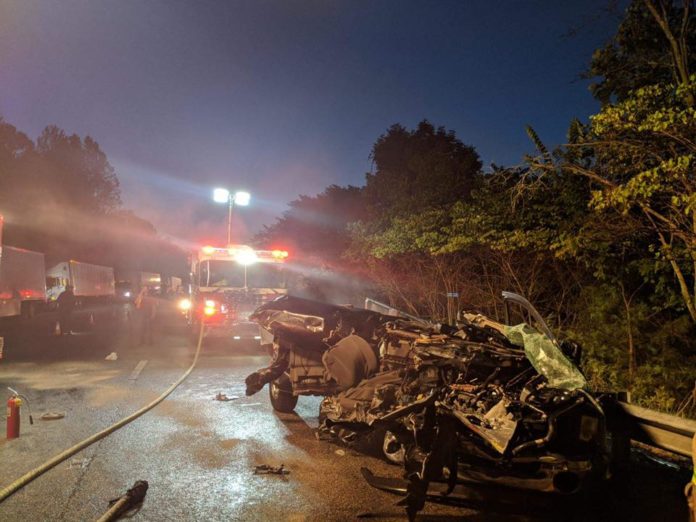A fatal crash that occurred on I-81 in Virginia on Wednesday highlights the tragic consequences of a lack of safe parking for truck drivers.
The crash occurred on the morning of July 29 on I-81 in Botetourt County, Virginia.
Thirty-year-old Michael Kreul of Lexington was the lone fatality in an accident involving a tractor trailer that was parked on the side of the road. According to police, the driver of the tractor trailer involved in the crash had intentionally pulled over and parked on the side of the road at mile marker 158 on I-81 South in order to sleep.
Authorities say Kreul’s pickup truck struck the tractor trailer that was illegally parked on the right side of the road, and after the pickup truck came to rest in the roadway, another tractor trailer heading south on I-81 hit the pickup truck.

Kruel was transported to the hospital where he later died.

The tractor trailer driver received four tickets following the crash for reasons such as parking along I-81 to sleep illegally and not leaving fluorescent markers around the vehicle to warn other drivers of the truck’s location.
Following the fatal crash, WXFR reports that several others truckers who were also illegally parked along I-81 were also cited.
Virginia police are reminding drivers that trucks parked on the side of the road can pose a real threat to traffic and can cause catastrophic accidents like this one.
The Federal Motor Carrier Safety Administration regulation, 49 CFR 392.22, specifically addresses the issue of big rigs parking on the shoulders of highways.
If a truck driver finds himself in a situation where he breaks down or is in an emergency and needs to pull over, the following safety precautions should be taken.
- When stopping on the shoulder of a highway for a reason other than a traffic stop, the truck driver must immediately turn on hazard warning signal flashers.
- The parked truck driver must keep his or her flashers on until the driver places a warning device on the traffic side of the road. The driver must place warning devices as soon as possible, but no later than 10 minutes after stopping on the shoulder.
- Approved warning devices for big rigs parked on the shoulder include three bi-directional emergency reflective triangles, red flags, fuses, liquid-burning flares, and other warning devices in addition to those required.
- Stopped truckers must place warning devices on the traffic side four paces from the vehicle in the direction of oncoming traffic; at 40 paces from the vehicle in the center of the shoulder in the direction of oncoming traffic; and at 40 paces in the direction away from oncoming traffic.
- If stopped on a shoulder within 500 feet of a hill, curve, or other obstruction, the big rig driver must place a warning device in the direction of the obstruction, a distance of 100 to 500 feet from the stopped truck.
- The big rig driver must not use emergency warning devices that produce flames if the commercial motor vehicle is leaking gasoline or any other flammable or combustible liquid or gas, unless the signal is far enough away to prevent a fire or explosion.
